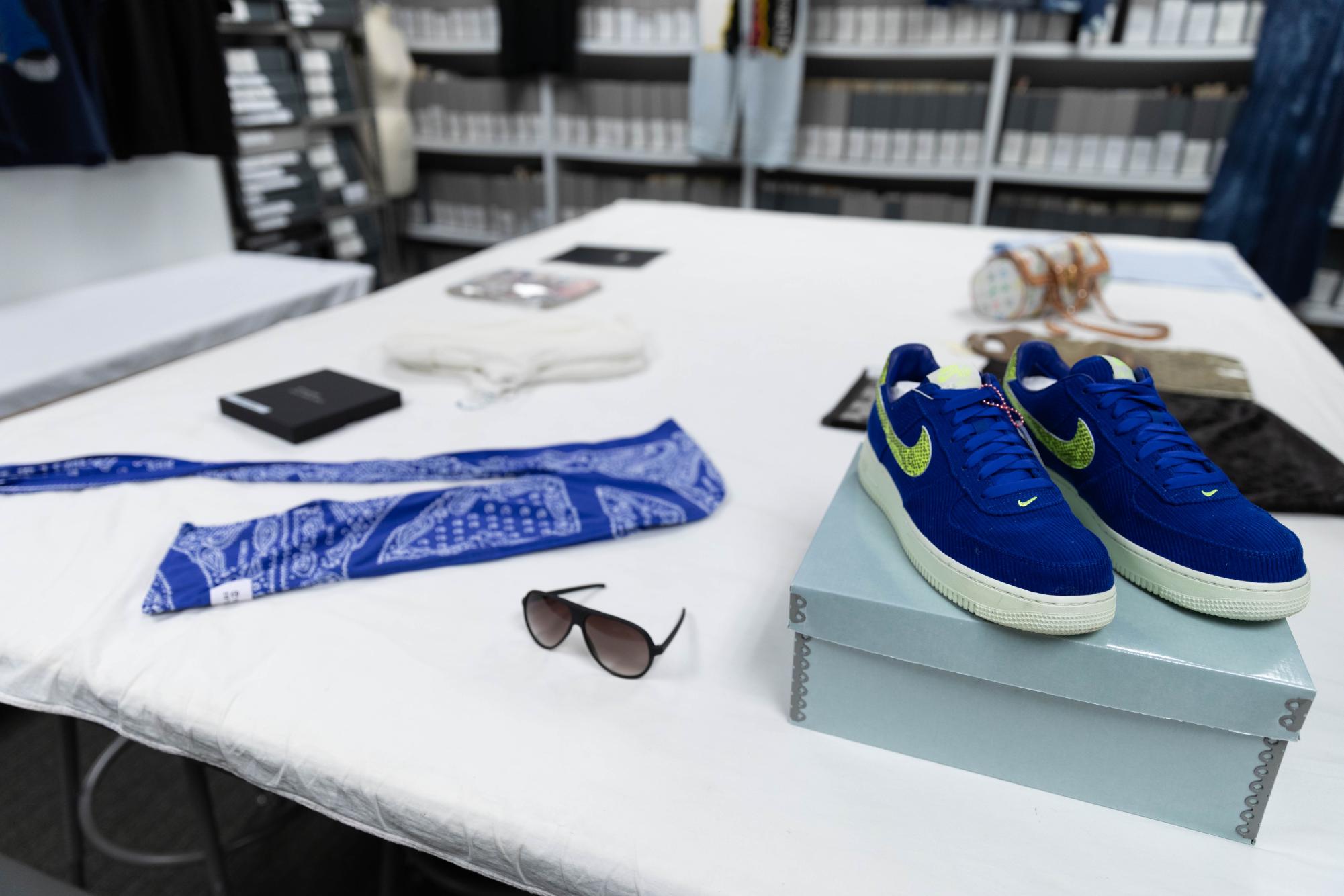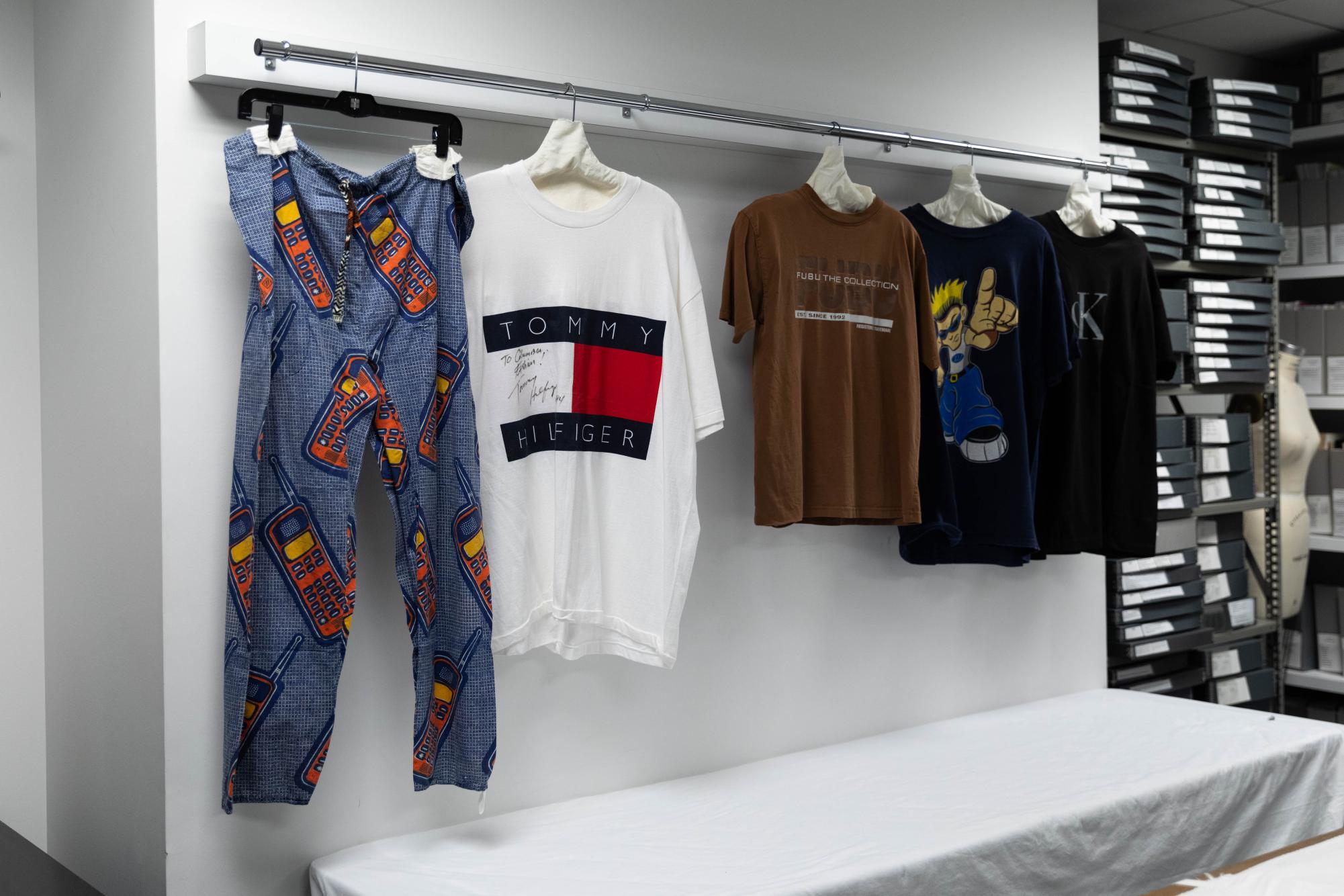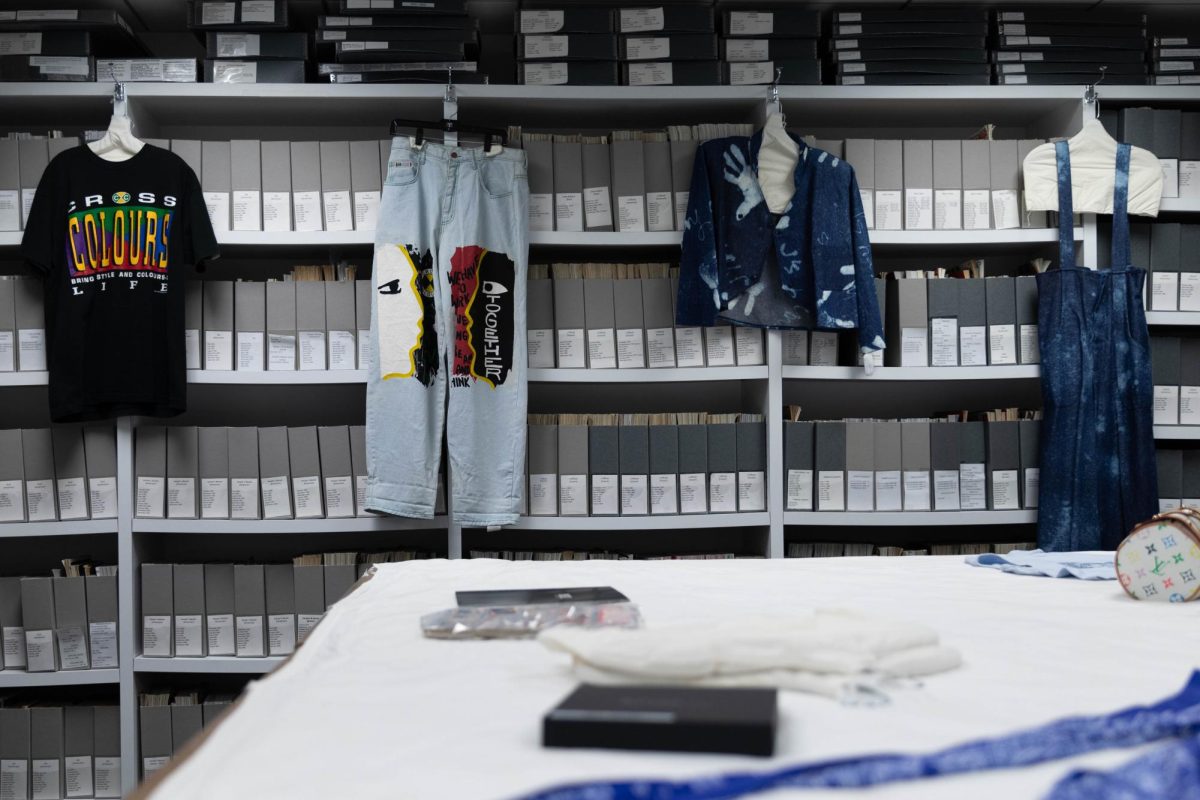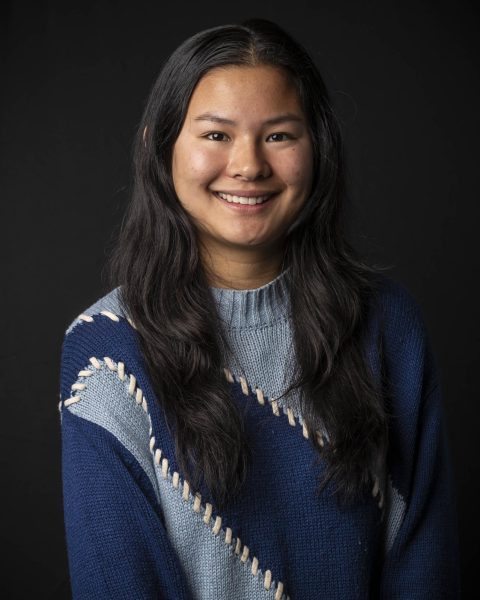THE HIP-HOP ISSUE
In 1973 in the Bronx, Clive Campbell, or DJ Kool Herc, who would later be nicknamed “the Father of Hip-Hop,” provided music for his younger sister’s block party, an event that’s cited as the birth of hip-hop.
Soon after, sneaker culture came along, and the collaboration between the genre and athletic wear began.
Sneaker culture dates back to the 1970s when sneaker companies began designing collaborations with famous basketball players.
Rappers also played a role in popularizing sneaker culture. In 1986 Run DMC, a rap group from Queens, New York, released their single “My Adidas” and started a movement behind the brand’s three stripes.
Sophomore Public Relations major Tyrell Bang credits hip-hop with bringing more inclusivity to the fashion world.
“I think without hip-hop, the fashion industry wouldn’t be as inclusive and also, I would say probably racially diverse,” Bang said. “I feel like it brought light to Black people in fashion.”
Later named “Hip-Hop’s fashion godfather,” designer Dapper Dan opened up his Harlem boutique in 1982 to bring luxury fashion to “underserved clientele.”
Dapper Dan collected prints from popular luxury brands in the 80s, such as Gucci, Fendi, Louis Vuitton and customized them for hip-hop icons like Run DMC, Salt and Pepa, LL Cool J and Bobby Brown.
Growing up on the upper west side of New York in the 90s, through playing basketball and “just being in the city,” Jacob Victorine, fashion studies professor, naturally got into sneaker culture.
“I started getting interested in sneaker culture because, like many other players, I wanted sneakers that matched my game,” Victorine said.

It was during Victorine’s time in junior high that streetwear “really started to gain momentum.”
“I would argue the majority of people under 40 in this country have been influenced in some way by hip-hop in their style, whether they realize it or not,” Victorine said.
After the brand’s launch in 1989, Cross Colours became a popular brand known for its bright color blocking, known as a staple on The Fresh Prince of Bel-Air as one of the brands that “paved the way” for streetwear.
After the success of Cross Colors, streetwear brands like FUBU and Karl Kani gained more popularity in the streetwear world with the help of influences like Magic Johnson, TLC, Snoop Dogg and Stevie Wonder.
Several vintage garments from streetwear brands, such as Cross Colours, Off White, Gucci and Karl Kani, can be found at Columbia’s Fashion Study Collection.
Rapper Nelly brought back Nike’s signature shoe with his 2002 single “Air Force Ones” and even had a brand deal with them to sponsor his “Nellyville” tour. Recently, Nelly said he is partially responsible for the shoe’s success.
The genre’s influence didn’t stop at endorsements.
Rappers also became designers and owners of their own brands. In 1999, Jay-Z and Damon Dash founded Rocawear, another hip-hop-style clothing brand that became popular in the 2000s. Rocawear was followed by Pharell Williams who founded Billionaire Boys Club in 2003. In 2004, rapper P. Diddy was named the Top Menswear Designer of the Year by the Council of Fashion Designers of America for his work with his clothing line Sean John which is known for its eyewear, fragrances and loungewear.
Kanye West’s entry into the fashion industry began in 2005 with the Kanye West x Nike Air 180 collaboration, followed by multiple other sneakers before his departure from Nike and launch of Yeezy and an Adidas partnership.
The 2000s was known as “the sneaker era” or “the hype era,” said Kenneth Catalan, store manager at Jugernaut, a streetwear store whose “base foundation was hip-hop.”

Jugrnaut Clothing, located at 427 S. Dearborn St., is a clothing store started in 2007 by three owners raised in Chicago, two of whom were in a hip-hop group.
Catalan said a lot of the trends in streetwear today were also common in the store.
“It was a lot of brighter, big oversized things. Honestly, what’s trendy now was trendy first in the 2000s,” Catalan said. “It all started relatively smaller because it wasn’t mainstream at the time – the fashion was a little more alternative.”
Catalan said hip-hop “gave people who didn’t have a voice a chance to express themselves.”
Bang, who also co-hosts Instagram account Columbia Fits, said hip-hop trends in fashion have evolved the way they have due to social media.
“In today’s world, it’s a lot easier for people to express themselves because all it takes is an Instagram post and everyone’s talking about what Doja Cat’s wearing, so it really comes with the age that we’re in,” Bang said.
West, Jay-Z and ASAP Rocky continued bringing luxury brands into streetwear with their collaborations with brands like Dior and Calvin Klein.
First-year fashion production major Amaya Jackson said hip-hop music has affected the fashion industry “in a causative way.”
Jackson said she commonly sees looks around campus stemming from ’90s and 2000s trends.
“We are generally influenced by what we consume the most,” Jackson said. “Hip-hop has always been influential, these days it’s so easy to take inspiration from what rappers are wearing.”
Resumen en español:
Los estudiantes y personal del departamento de modas hablan sobre las tendencias del hip-hop a través de los años.
La creación del hip-hop surgió cuando en 1973, Clive Campbell, conocido más como DJ Kool Herc, innovó el “breakbeat” en una fiesta de su hermana menor. Desde ese entonces, el hip-hop ha influido a la moda por muchos años.
Poco después apareció la cultura sneaker que se popularizó a través de raperos como Run DMC y el streetwear.
El estudiante de relaciones públicas Tyrell Bang le da crédito al hip-hop por traer más elementos de inclusión en la moda.
Las marcas de streetwear como Cross Colours, Off White, Gucci y Karl Kani pueden ser apreciados en Columbia’s Fashion Study Collection, ubicado en el octavo piso del edificio de 618 South Michigan Ave.
“Generalmente, estamos influenciados por lo que más consumimos”, dijo Amaya Jackson, quien estudia producción de modas. “El hip-hop siempre ha sido influyente. En estos tiempos, es fácil ser inspirados por la ropa de los raperos”.





